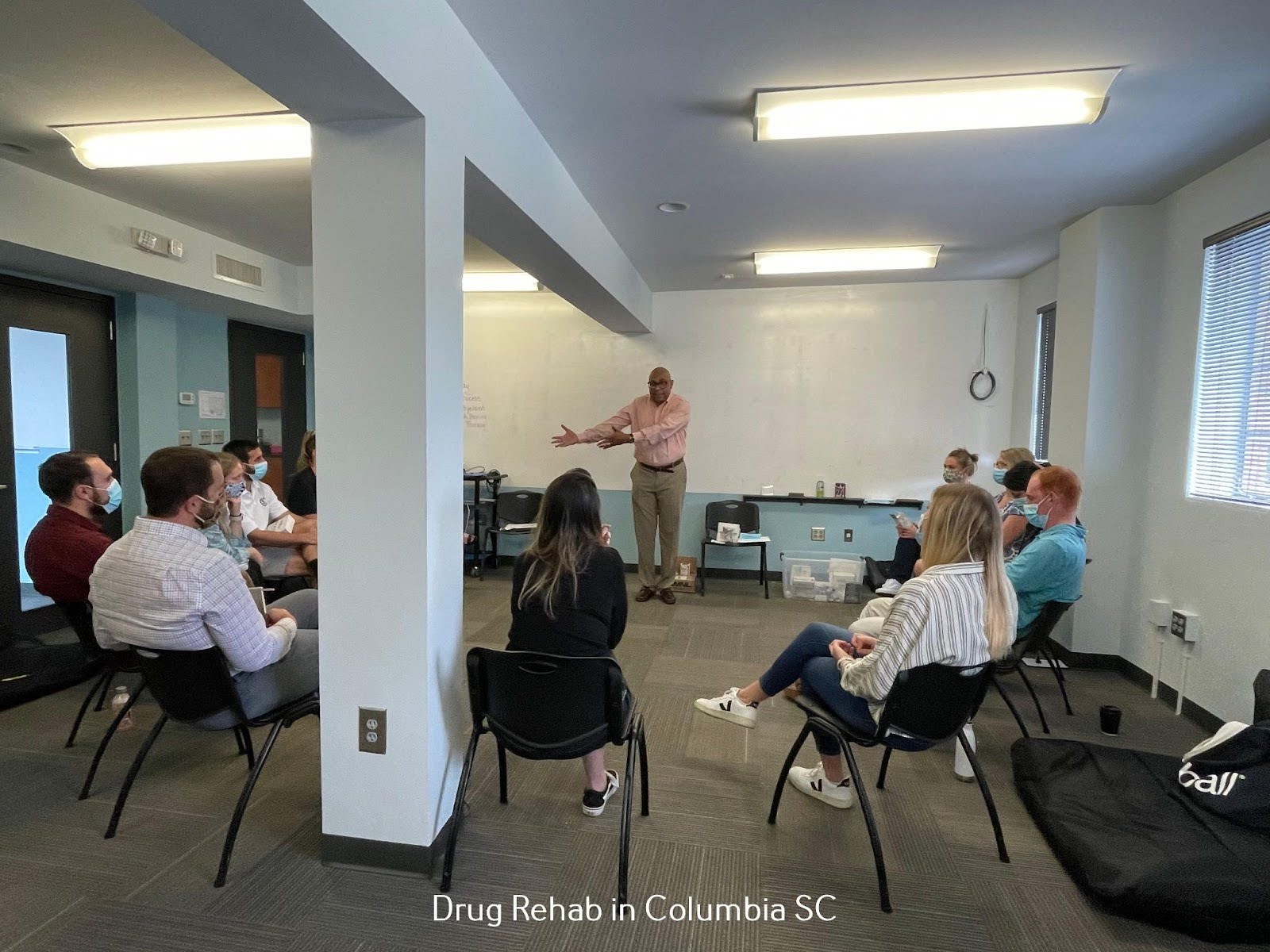MDMA, or molly, is a chemical substance widely known for its psychoactive properties and use in recreational drugs. It’s often seen as the primary component of ecstasy pills and has become increasingly popular throughout much of the world.
Despite its notoriety in clubs and rave scenes, many people don’t know what MDMA is—or what risks come with it. In this blog post, we will explore the chemistry of MDMA, how it works in our bodies, and any potential risks associated with using it recreationally.
Chemical Composition |
Legal Status |
Identifiers |
| 3,4-methylenedioxymethamphetamine | Illegal | CAS Number 42542-10-9
PubChem CID 1615 |
MDMA High-Level Fact Sheet
MDMA is a synthetic drug first developed in 1912 in 1912 by German chemist Anton Köllisch. If you are considering taking ecstasy in near future, here are a few things you must be aware of
MDMA Chemical Composition
It’s chemically constituted of a substituted amphetamine core, featuring a methylenedioxy group on the side chain, which gives it both stimulant and psychedelic properties. The molecular formula of MDMA is C11H15NO2.
MDMA Legal Status
MDMA is classified as a Schedule I drug which means it is illegal in the United States.
MDMA Clinical Data
MDMA, also known as 3,4-Methylenedioxy-N-methylamphetamine, is a synthetic psychoactive drug. It is a part of the larger family of drugs known as substituted amphetamines.
MDMA is most commonly sold under the trade names such as Ecstasy, E, and Molly. It has also been referred to by many other street names, including Adam, Beans, Clarity, and XTC.
MDMA is classified as an empathogen that acts on both inhibitory and excitatory systems at the same time. Effects produced by this drug include increased extroversion and heightened emotional empathy while leading to an elevated sense of well-being.
Physically, it produces stimulating effects such as elevated heart rate and blood pressure levels along with increased body temperature and sweating. These effects begin within 30–45 minutes after ingestion and last around 3–6 hours on average depending on factors such as dose size, purity level, or method of ingestion
MDMA Use Cases:
Medical:
MDMA has been studied extensively over the decades due to its ability to reduce fear and anxiety while increasing feelings of compassion and empathy. This has led to its adoption in clinical settings around the world where it is administered under supervision in order to help people suffering from PTSD or social anxiety disorders.
However, it is important to know that MDMA is illegal in the USA even for clinical use, and can only be prescribed medically in some European countries and the UK.
Performance Enhancement:
The idea of using MDMA for performance enhancement has been gaining steam in the last few years, with some athletes, academics, and entrepreneurs experimenting with it. While scientific research on the long-term effects of MDMA isn’t conclusive yet, anecdotal evidence suggests that it can boost confidence and creative thinking abilities.
While some athletes and performers are using it to help increase their stamina and confidence on stage, this form of “chemically-induced” performance boosting is highly controversial and often frowned upon.
Studies have revealed that while MDMA can lead to physical alertness in certain situations, its stimulant effects are short-lived and potentially dangerous due to the significant risk of overdosing or suffering adverse side effects.
Recreational:
MDMA is typically used recreationally at parties or music festivals where users experience an enhanced sense of connection to the music and other people around them. Plus the heightened sensitivity and increased stamina have made it very common among users in rave settings.
MDMA dosages by form and strength:
Since MDMA is illegal, there is no recommended dosage for it. However, health practitioners suggest 100-150 mg for beginners and 100-200 mg for experienced users. Taking too much right away can lead to unpleasant experiences or even dangerous physical reactions.
It is also important to note that MDMA affects people differently depending on factors such as gender, weight, other substances consumed in combination with MDMA (such as alcohol), hydration level, and mental state.
Additionally, waiting at least eight hours between doses can help to help prevent excessive overstimulation of serotonin receptors in the brain which can result in feelings of anxiety or confusion. And then take half the amount of your first dose to prevent MDMA overdose.
MDMA Side Effects:
Since it is often used recreationally for its stimulant and hallucinogenic effects, therefore, it’s important to be aware of the potential side effects of MDMA use before deciding to take the drug.
Common Side Effects on MDMA:
The most common short-term side effects of taking MDMA include nausea and vomiting, dehydration, increased body temperature, teeth grinding or jaw clenching, paranoia or anxiety, and fatigue.
In addition to these physical symptoms, users may experience psychological changes such as mood swings or altered perception. It is important to note that these symptoms can vary in intensity depending on the individual user’s body chemistry and the amount taken.
Serious Side Effects on MDMA:
Although rarer than common side effects, there are still some serious risks associated with taking MDMA. High doses can cause seizures and even coma due to serotonin syndrome—a condition where too much serotonin floods the brain—and hyperthermia (overheating).
Other serious side effects that have been reported include elevated heart rate and blood pressure, kidney failure, confusion, anxiety attacks, depression, memory loss, psychosis, and hallucinations.
MDMA Long-Term Effects:
Long-term use of MDMA can lead to serious mental health issues including depression and anxiety disorders. Additionally, those who take MDMA may develop a tolerance for the drug over time which could lead to addiction or dependence issues down the road.
Plus, heavy users may suffer from severe memory problems caused by damage to areas of the brain involved in memory formation processes.
MDMA Addiction:
MDMA addiction is a growing problem in the United States due to the prevalence of readily available club drugs. Many that still view it as an acceptable recreational experience fail to realize how dangerous MDMA use can become over time.
MDMA addiction follows a similar pattern to other substance use disorders- it leads to changes in brain chemistry over time that impact decision-making skills and body chemistry.
Extended ecstasy use can cause paranoia and hallucinations as well as other major physical and psychological health problems. It is therefore vitally important for people to be aware of the risks associated with MDMA and possible treatment options for MDMA addiction.
Types of Drug Treatment for MDMA Addiction
Since MDMA only causes psychological dependence, the most commonly prescribed and effective treatment option for MDMA addiction is cognitive behavioral therapy (CBT), which helps users modify their mindset, behaviors, and coping mechanism with life’s stressors.
MDMA Withdrawal:
Unfortunately, MDMA can also lead to psychological dependence if abused for a long time in excessive quantity, which can result in withdrawal symptoms when the drug is stopped. As with any other substance abuse disorder, withdrawal from MDMA can be difficult to manage without support and guidance.
Symptoms of MDMA withdrawal may include agitation, insomnia, loss of appetite, fatigue or low energy levels, depression or negative moods, irritability or anger outbursts, anxiety or fearfulness, cravings for the drug, and cognitive difficulties such as memory problems and difficulty concentrating.
Additionally, some individuals may experience changes in body temperature regulation while withdrawing from MDMA resulting in feelings of feverishness accompanied by sweating. In terms of duration of withdrawal symptoms from MDMA use; symptoms generally peak after a few days but may persist for up to several weeks.
Commonly Seen MDMA Drug Combinations:
MDMA, famously known as ecstasy or ‘molly’, is often seen in combination with other drugs to create unique experiences. The most common combinations are MDMA with LSD, MDMA and heroin, MDMA and cannabis (such as marijuana), and MDMA and alcohol.
- When combined with LSD, the experience is commonly referred to as ‘candy flipping’. This drug combo can lead to an intense and incredibly focused experience that may last from 8-12 hours. The effects of the combination generally begin within 30 minutes of ingestion, much faster than either drug individually. It has been found that this combination can lead to enhanced visuals and audio stimulation, intense introspection, and improved physical energy levels which may last for several hours.
- Moreover, combining MDMA and heroin, commonly referred to as a speedball, is a dangerous activity that can easily lead to an overdose. The effects of MDMA, or Ecstasy, are significantly enhanced when combined with the higher potency of heroin and can produce an intense high that users may find irresistible. Unfortunately, this ingestion technique also comes with significant risks, including increased blood pressure and heart rate, nausea, sweating, paranoia, and even respiratory failure which can lead to death.
- The combination of MDMA and cannabis allows users to achieve a heightened sense of relaxation while being able to stay alert enough to engage in conversations or activities like dancing.
- Since MDMA is a common party drug, it is very often mixed with alcohol. This results in a hazardous combination of a powerful stimulant and depressant together. Alcohol causes dehydration and impairs judgment, while MDMA can cause an adverse reaction in those with pre-existing mental or physical conditions.
Mixing these two substances can increase heart rate and body temperature, leading to dramatic changes in blood pressure levels that can ultimately be dangerous.
These combos are often used by people looking for an increased sense of fun during parties or gatherings; however, it increases risks for dehydration, overheating, and cardiac complications so caution should always be taken when using these substances together.
MDMA Facts and Statistics:
In the recent decade the use of MDMA in parties and clubs has increased exponentially, especially among teens and young adults. According to the National Survey on Drug Use and Health, in 2020, an estimated 2.6 million people aged 12 or older had used MDMA in the past year.
The majority of people who use MDMA are in their late teens or early twenties. NIDA’s Monitoring the Future survey found that past-year use of MDMA among high school seniors has been gradually increasing since 2017, reaching the highest level in the past decade.
The same survey found that past-month use of MDMA among high school seniors was 2.5% in 2019, up from 1.8% in 2017.
MDMA History and Cultural Impact:
MDMA (3,4-methylenedioxy-methamphetamine) was first synthesized in 1912 by a German pharmaceutical company, Merck, but its psychoactive properties were not discovered until the 1970s.
In the 1970s and 1980s, MDMA began to be used recreationally, particularly in the nightclub and party scene. It was known as “Ecstasy” and was often taken at dance clubs and raves. During the 1980s, MDMA became popular as a “party drug” and was used by young adults at clubs and parties.
In 1985, the U.S. government classified MDMA as a Schedule I controlled substance, making it illegal to manufacture, possess, or distribute. Despite the ban, MDMA continued to be used recreationally and in the therapy and counseling fields, where it was believed to have therapeutic benefits.
In recent years, there has been renewed interest in the therapeutic potential of MDMA, with clinical trials underway to investigate its use in treating conditions such as post-traumatic stress disorder (PTSD) and anxiety associated with a terminal illness.
The cultural impact of MDMA is significant, the drug has played a role in the development of electronic dance music (EDM) and rave culture. Rave culture, which emerged in the late 1980s, was characterized by large-scale dance parties featuring EDM music and the use of Ecstasy.
MDMA Identifiers
Given below is the list of MDMA identifiers:
| Identifier Name | Identifier Code |
| CAS Number | 42542-10-9 |
| PubChem CID | 1615 |
| IUPHAR/BPS | 4574 |
| DrugBank | DB01454 |
| ChemSpider | DB01454 |
| UNII | KE1SEN21RM |
| KEGG | KE1SEN21RM |
| CHEBI | 1391 |
| ChEMBL | 43048 |
| PDB ligand | B41 |
Bottom Line: MDMA in the United States
The decision whether or not to take MDMA should never be taken lightly due to its potentially dangerous consequences both in the short-term and long-term sense. That being said, it’s important for anyone considering using this drug to become educated about its potential side effects before making a decision about whether or not it’s right for them.
By understanding how MDMA affects your body physically as well as mentally you’ll be able to make an informed decision about when—or if—to use it safely and responsibly. Thanks for reading!






